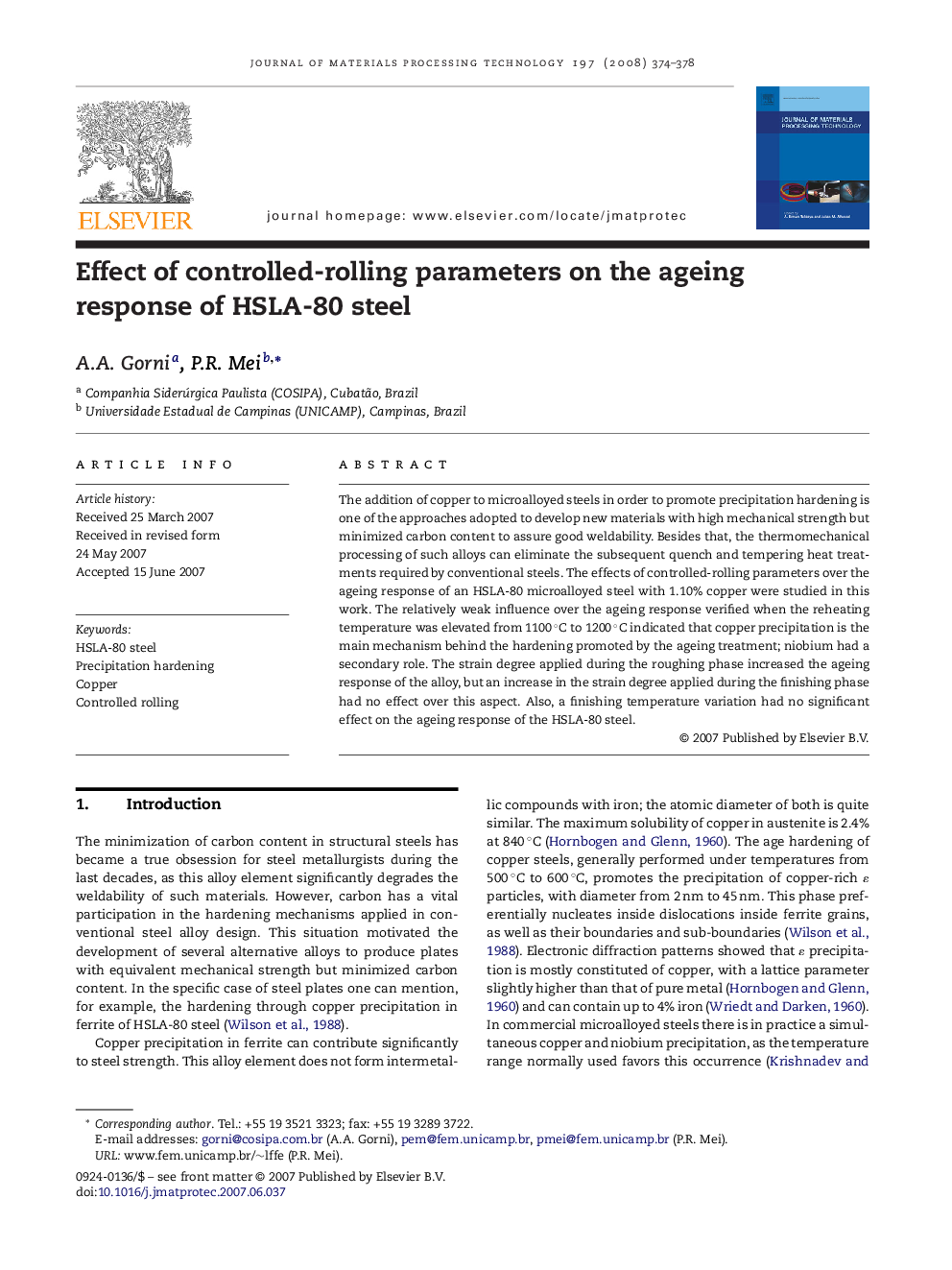| Article ID | Journal | Published Year | Pages | File Type |
|---|---|---|---|---|
| 793799 | Journal of Materials Processing Technology | 2008 | 5 Pages |
The addition of copper to microalloyed steels in order to promote precipitation hardening is one of the approaches adopted to develop new materials with high mechanical strength but minimized carbon content to assure good weldability. Besides that, the thermomechanical processing of such alloys can eliminate the subsequent quench and tempering heat treatments required by conventional steels. The effects of controlled-rolling parameters over the ageing response of an HSLA-80 microalloyed steel with 1.10% copper were studied in this work. The relatively weak influence over the ageing response verified when the reheating temperature was elevated from 1100 °C to 1200 °C indicated that copper precipitation is the main mechanism behind the hardening promoted by the ageing treatment; niobium had a secondary role. The strain degree applied during the roughing phase increased the ageing response of the alloy, but an increase in the strain degree applied during the finishing phase had no effect over this aspect. Also, a finishing temperature variation had no significant effect on the ageing response of the HSLA-80 steel.
